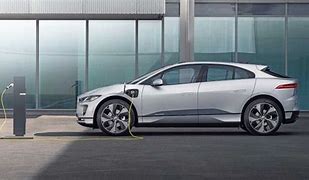 Electric vehicles are becoming increasingly popular and so ensuring their safety is paramount. This article explores how to manage the key hazards and risks for the safe operation of electric vehicles.
Electric vehicles are becoming increasingly popular and so ensuring their safety is paramount. This article explores how to manage the key hazards and risks for the safe operation of electric vehicles.
Current UK Government policy is to end the sale of new petrol and diesel vehicles by 2030 and for all new cars and vans to be fully zero emission at the tailpipe by 2035.
As a result, vehicle manufacturers are now focusing on alternative means of power, most notably electric as they phase out the manufacture and sale of petrol and diesel engine vehicles.
Latest figures from the RAC suggest that there are 712,000 “Battery Electric Vehicles” registered in the UK along with over 200,000 plug-in hybrids.
As this figure increases annually, organisations transitioning to an electric vehicle fleet will need to consider the potential hazards and risks associated with electric vehicles.
Currently, there are three types of vehicles.
Battery electric vehicles use a large capacity battery and electric motor/s to drive the vehicle. The battery needs to be charged from the electricity supply network when the vehicle is not in use.
Hybrid vehicles typically use two sources of power (internal combustion engine and battery) automatically with the vehicle braking systems used to charge the battery. This differs from a plug-in hybrid vehicle that can have its battery charged directly from the electrical supply network.
According to the Health and Safety Executive (HSE), “voltages present in electric and hybrid vehicles are significantly higher (currently up to 650 Volts direct current (dc)) than those used in other vehicles (12/24 Volts dc)” and that “in dry conditions, accidental contact with parts that are live at voltages above 110 Volts dc can be fatal”.
Battery systems may contain chemicals that can be harmful if released. They also store significant amounts of energy that can give rise to explosion if not dealt with correctly.
Based upon the above, the HSE have produced a list of hazards associated with these types of vehicles. This includes the following.
Other hazards identified include:
Although data is limited, there is some evidence to suggest that fires involving electric vehicles are increasing.
With an increase in vehicles this is likely to be the case but certainly there has been some notable warnings issued by UK fire and rescue services in recent times, particularly in relation to electric bicycles and scooters using lithium-ion batteries.
Of the data available, it does suggest that “thermal runaway” associated with vehicle batteries is causing rapid fire spread and total loss of the vehicle involved in the fire.
As a result, transport providers for example are banning users from taking their e-scooters onto trains.
The powerful voltages required to charge battery electric vehicles must be carefully managed. Factors to consider include:
Organisations will need to consider where charging points are to be installed. If at the workplace, then all relevant general health and safety and fire safety regulations will need to be adhered to.
There may be circumstances where employees may be required to charge vehicles at home. Although there is limited guidance on this situation, organisations should as part of the risk assessment process be determining if this can be undertaken safely, following best practice.
In terms of best practice, the Institution of Engineering and Technology (IET) have published Code of Practice for Electric Vehicle Charging Equipment Installation, 4th Edition.
This publication provides a clear overview of charging equipment, as well as setting out the considerations needed prior to installations and the necessary physical and electrical installation requirements.
It also details what needs to be considered when installing electric vehicle charging equipment in various different locations — such as domestic dwellings, on-street locations, and commercial and industrial premises.
The fire risk assessment for the workplace should also be reviewed to determine whether any additional general fire precautions may be required when installing charging facilities. Factors to consider may include:
Any installation should be undertaken by a competent organisation. The Office for Zero Emission Vehicles contains a list of authorised installers. These installers should follow best practice as provided by the IET and also found BS EN 61851-1: Electric Vehicle Conductive Charging System-General Requirements.
Clearly all employees required to charge electric vehicles must be provided with the relevant information, instruction and training. The primary source of information will be any guidance provided by both the vehicle manufacturer and charging equipment manufacturer.
It may also be advisable to extend training to include what action to take in the event of a malfunction including fire and faults with either vehicles or charging equipment.
As with any equipment installed in the workplace, the charging equipment must be subject to regular and appropriate inspection and maintenance. Again, the primary source of information to inform this regime will be from the manufacturer/s.
Employers may face situations where employees wish to store and charge e-scooters/e-bikes at the workplace (when using them to commute to and from work for example).
This should be subject to a risk assessment/fire risk assessment to determine the risks involved.
The National Fire Chiefs Council has produced generic guidance on charging including using approved charging devices and avoiding storage in escape routes. Further details can be found from the link below.
Electric vehicles can have different characteristics to combustion engine vehicles. As such all drivers should be given familiarisation training to include:
There may be circumstances where electric vehicles have to be worked on. The HSE have identified four categories as follows.
The HSE website notes that “additional skills and training will be necessary to allow people to work safely with E&HVs. The levels of competency required will vary greatly and are dependent on the type of work that people are expected to do”.
A suitable and sufficient risk assessment should be undertaken if any of the above activities are to be carried out by employees. Organisations such as the Institute of Motoring Industry have various courses to ensure competency of employees.
The HSE website also provides basic safety information in relation to the four categories noted above.
For example, it states that when undertaking maintenance (that excludes the high voltage systems), employees should:
Electric vehicles are becoming the norm. As such, where an organisation is to utilise such vehicles, it is important that the hazards and risks associated with the use of such vehicles are known and appropriately managed.
As electric vehicles are a relatively new technology, it may be the case that the hazards involved with their use may change and increase.
It is advisable when introducing electric vehicles and associated charging points that their use and maintenance are kept under review.
Contact us for further information.
(Correct at time of posting)
 From 4 September 2023, HSE inspectors will be carrying out inspections of construction sites, focusing on the health risks of moving and handling materials on site.
From 4 September 2023, HSE inspectors will be carrying out inspections of construction sites, focusing on the health risks of moving and handling materials on site.
Around 42,000 construction workers suffer musculoskeletal disorder (MSDs) which can cause years of agonising aches and pains.
Serious aches, pains and strains can affect every part of someone’s life.
Construction site inspections focused on moving and handling in materials throughout September and October.
If you don’t know where to start and what is needed, we can do a full health and safety audit on your premises.
Contact us for further information.
Every year since 2003, people celebrate National Positivity Day or Positive Thinking Day on September 13. It’s a day to ignore our fears and worries (even if it’s just for a day!) and focus solely on the good in our lives, spread happiness, and be kind to ourselves and others.
If it’s your first time learning about Positive Thinking Day or you need more ways to celebrate the annual tradition, I’ve got a few ideas that can boost your positivity.
And if you practice these ideas daily or as often as possible (instead of once a year), you’ll become a more optimistic, resilient, and happy person.
If you need advice or wish to talk, contact us! 
Contact us for further information.
EDIT
Our parachute jump is this week. We have raised 3/4 of our target. Thank you to those who have sponsored our event. To those who still wish to, they still have time.
Thank you.
Emma & Kerry
x
Emma &Kerry have been great friends for many years. They have taken on many challenges together.
This year they plan on doing a challenge to raise money for charity by doing something exciting. They have decided to do a parachute jump in Whitchurch on 24th August 2023. Now some people may think that they have lost their minds but they are both looking forward to supporting each other with this challenge.
They have decided to choose a charity each and split the money between the two charities.
Emma
Her chosen charity is the Cardiology Department at the Queen Elizabeth Hospital, Birmingham.
A cardiologist is a healthcare provider who can treat chest pain, high blood pressure and heart failure, as well as problems with heart valves, blood vessels and other heart and vascular issues. They can order tests like electrocardiograms, echocardiograms and CTs (computed tomography) to find out what’s wrong
Her reason for choosing this charity is because they help her husband Eric and others to gain some normality and independence in their day to day lives.
She ran a half marathon at Lake Vyrnwy to raise money for them in 2018!
To find out more about them, follow this link. https://www.nhs.uk/services/hospital/queen-elizabeth-hospital/RJ231/departments/SRV0014/cardiology/
Kerry
Her chosen charity is SYST Shropshire Youth Support Trust.
SYST is a registered charity that offers holistic and bespoke support to young people who are not in education, employment or training. So far the trust has supported nearly 2500 young people.
Her reason for choosing this charity is so the trust can assist many more young people to build their confidence by offering employment support, wellbeing support, or even helping them to set up their own business!
To find out more about them, follow this link. https://www.systbusiness.co.uk/
The money that is being raised will be collected by UK Skydiving Adventures, they will then issue payment to our chosen charities.
Emma and Kerry hope that you can offer sponsorship to help them to raise funds to support their chosen charity.
Thank you.
Emma Woodhouse is fundraising for UK Skydiving Adventures | Give as you Live Donate
Workplace washrooms, aside from office areas, are one of the most used parts of any institution. Whether you’re a small or large-scale business, keeping the washrooms clean, safe and well-furnished is crucial for general health and safety but also additional aspects such as employee wellbeing and satisfaction. As well as keeping the space clean, businesses must also ensure they are keeping on top of workplace regulations, potential hazards and signage to ensure employees and visitors are using the facilities safely.
Whether it’s a cooperate office, warehouse or salon, maintaining your workplace washroom should be a priority for any business. There are also a number of legal requirements that must be met in agreement with the Workplace (Health, Safety and Welfare) Regulations of 1992. Here are some essential features to include in terms of safety and regulations.
Placing signage around your workplace provides easy access and understanding for any employees, clients or visitors. Ranging from exit signs to hand washing stations, here are some common safety signs surrounding a workplace washroom and why they’re important for your business and users.
Cubicle signs: One of the most obvious signs included in a washroom would be the entrance sign to each facility, ensuring all users know where they are going but also enter the right one. In large offices, there might be more than one of these signs for those who need to walk a further distance. These signs will also offer guidance to facilities such as baby changing areas, shower rooms, restrooms, prayer rooms or disabled toilets.
Exit signs: For many reasons, employees or visitors can become distressed or isolated when using a washroom, leaving them confused or overwhelmed, especially when mental or physical health is involved. Clear exit signs can be valuable for visual aid and prevention of panic but also for those who have never been to the workplace before and aren’t sure of their surroundings.
Hygiene signs: Many businesses place hygiene signs such as hand wash guidance, drying instructions and sanitary care to ensure each user is meeting hygiene standards and keeping both themselves and others safe. Since the pandemic, this has become even more prominent as well as supplying additional care such as hand sanitiser, sensor equipment and distance markings.
Temperature guides: For institutions such as schools or community centres, investing in water temperature guides can help to avoid burning hazards and help users to understand how the taps function.
Cleaning and wet floor signs: Most people have come across a wet floor sign or cleaning sign when at work or in public. These signs make sure users are aware that the facility is either out of use or they might come across wet surfaces and potential slip hazards.
Disabled and accessible toilets: When installing a disabled toilet cubicle, it’s important to also remember these facilities may require additional instructions or signs such as alarm/support instructions. The Equality Act 2010 states that signposting disabled signs is essential. Easily-seen labels and signs are a baseline requirement.
One of the most important elements of having and maintaining a workplace washroom is ensuring you are meeting all the requirements and regulations set by the government. As these facilities are so prominent in terms of hygiene, health and safety, it’s necessary for every business to meet these guidelines to create a space which is safe and easy for everyone to use throughout the day.
These regulations cover different aspects of a workplace and washroom including dimensions and space, lighting, temperatures, fumes, ventilation, maintenance, inclusivity and cleanliness. As part of these regulations, businesses might also operate specific training programmes, risk assessments and regular checks throughout the facilities to ensure health and safety are consistently maintained and each staff know the key points.
Contact us if you require further information.
Guest Blog
Author details: Chris Kightly, Managing Director, Inspired Washrooms